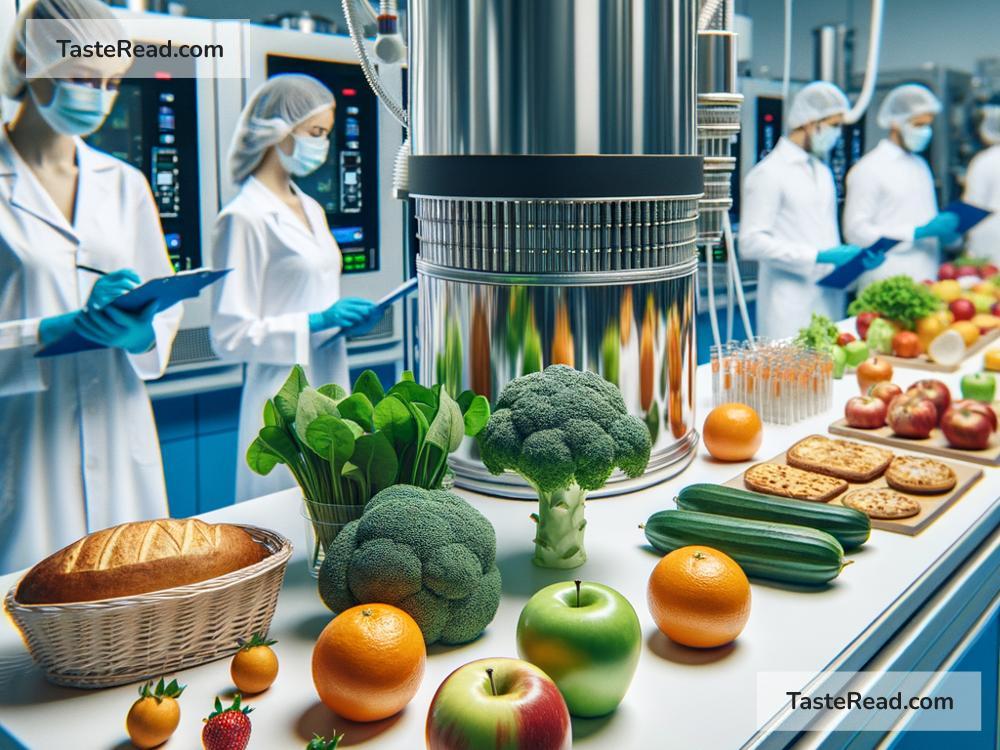The Science of Food Irradiation: Safety and Benefits
When buying food from the market, we often think about how fresh it is or whether it’s safe to eat. Most of us want food that won’t make us sick or spoil too quickly. That’s where food irradiation comes in. Food irradiation may sound a little complicated, but it’s simply a scientific process that helps make food safer and extends its shelf life. Let’s dive into what it is, how it works, and why it’s safe.
What Is Food Irradiation?
Food irradiation is a process that uses energy to kill bacteria, viruses, and other harmful organisms in food. It can also slow down the spoiling process, making food last longer. Essentially, this process “cleans” the food without washing it with soap or chemicals. The energy comes from sources like X-rays, gamma rays, or electron beams, and it works on food in much the same way sunlight or microwaves work on other materials.
Don’t worry — food irradiation does not make your food radioactive. The process is carefully controlled, and all it does is expose the food to a certain level of energy to make it safer.
How Does It Work?
The basic idea behind food irradiation is fairly simple. When food is exposed to energy rays (like gamma rays or X-rays), harmful organisms inside or on the food are destroyed. For example:
- Bacteria like Salmonella and E. coli can make you sick. Food irradiation kills these bacteria, reducing the risk of food poisoning.
- Parasites found in some foods (like tapeworms in meat) are eliminated.
- Molds and fungi that make food spoil can be reduced or stopped from growing further.
In addition, food irradiation can slow natural processes that cause fruits and vegetables to ripen too fast or spoil. This means you can enjoy fresh produce for a longer time before it goes bad.
The process does not change the taste, texture, or nutritional value of most foods. So, the apple you eat after irradiation still tastes just like the apple picked off the tree.
Is It Safe?
One of the first questions people ask about food irradiation is whether it’s safe. The answer is yes — food irradiation is backed by science and approved by health authorities around the world, including the World Health Organization (WHO), the United States Food and Drug Administration (FDA), and the United Nations Food and Agriculture Organization (FAO).
Many researchers have studied the effects of irradiation for decades. They found that it does not make food radioactive or unsafe to eat. Instead, it works similarly to pasteurizing milk — it helps make food safer by killing harmful organisms.
In fact, irradiated food is especially helpful for people with weak immune systems, such as hospital patients, young children, or the elderly. For them, foodborne illnesses can be particularly dangerous, so eating safer, irradiated food is a good option.
What Foods Are Irradiated?
Many types of foods can be treated with irradiation. Some examples include:
- Meat and poultry: Helps reduce harmful bacteria like Salmonella and E. coli.
- Seafood: Long-lasting fish and shellfish without dangerous germs.
- Fruits and vegetables: Longer shelf life and fewer pests (like fruit flies).
- Spices and seasonings: Eliminates fungi and bacteria.
However, not all foods are irradiated. It’s usually done for foods most at risk of contamination or spoilage. In some countries, the labels on food packages let you know whether a product has been irradiated.
Benefits of Food Irradiation
Food irradiation has many benefits for both consumers and manufacturers. Here are some of the biggest advantages:
-
Safer Food: By destroying harmful bacteria, viruses, and parasites, food irradiation reduces the chances of foodborne illnesses. This can save lives and prevent hospital visits.
-
Longer Shelf Life: Irradiated foods last longer, which means less waste. For example, fruits like strawberries that normally go bad in just a few days can stay fresh for weeks.
-
Reduced Need for Chemicals: Some foods are treated with chemicals like pesticides to get rid of pests. Irradiation is a safer alternative that doesn’t leave chemical residues on food.
-
Global Food Security: Irradiation makes it easier to transport food across borders because it reduces the risk of spreading pests or diseases. This is especially helpful for exporting fresh produce to other countries.
-
More Convenient Food Storage: With longer-lasting food, people can store products for days or weeks without worrying about them spoiling too quickly.
Common Misunderstandings
Some people worry that food irradiation changes the food or makes it dangerous to eat. These are myths. Research shows irradiation does not make food radioactive or reduce its nutritional quality. The energy rays used in the process only kill harmful organisms — they don’t stay in the food or affect its safety.
Others believe irradiated food tastes different. In reality, most foods taste exactly the same after irradiation. The process is mild and does not affect flavor for the majority of foods.
Conclusion
Food irradiation is a safe and useful way to make food safer and last longer. It’s backed by science and approved by experts worldwide. Whether it’s meat, seafood, fruits, or spices, irradiated foods can reduce the risk of illness, cut down food waste, and help ensure fresh food is available wherever it’s needed.
As consumers, it’s important to learn the facts about food irradiation. By understanding how it works and why it’s safe, we can make informed choices about the food we eat. With food irradiation, science is giving us cleaner, safer, and longer-lasting food — and that’s something worth celebrating!


